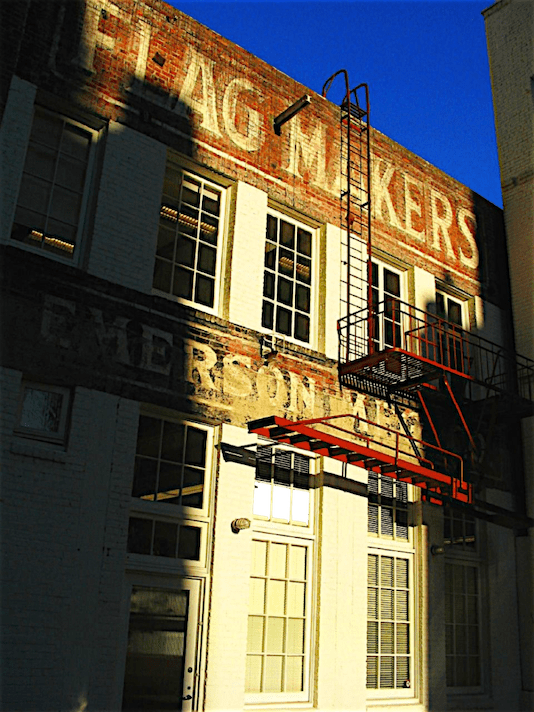The Flag Makers

A Legacy of Flagmakers in San Francisco, California
We are storytellers. We are innovators. We are Emerson USA, weaving threads of past, present, and future into symbols that inspire.
From the cobbled streets of San Francisco, steeped in the Gold Rush era’s dynamism, to the sun-drenched valleys whispering tales of agricultural abundance, each Emerson flag carries the torch of Timothy O’Donnell’s vision. Look beyond the familiar: the Olympic rings, triumphant symbols of global unity; the vibrant hues of NFL teams, igniting passionate rivalries; the iconic Apple logo, a testament to Californian innovation. Each stitch in our flags whispers the magic of Disneyland, the crack of the bat in a packed MLB stadium, and the rhythmic heartbeat of Amtrak traversing diverse landscapes. Each Emerson flag is a unique narrative, imbued with the spirit it represents, a potent symbol woven into the very fabric of Californian identity.
Elevate your Californian journey with a flag that resonates with your unique story and expression of shared identity. Imagine the august halls of Stanford University, where graduates celebrate under an Emerson flag emblazoned with their alma mater’s seal, a testament to generations of intellectual pursuit. In Sacramento’s corridors of power, diverse voices unite under an Emerson flag, its vibrant design embodying the collaborative spirit and pioneering essence of California. Seek the tranquil solace of San Diego’s shores, mirrored in the peaceful hues of Emerson custom-crafted flags, or feel the pulse quicken alongside Burbank’s aspiring dreamers as their ambitions take flight with vibrant flags dancing in the breeze.
Feel your California spirit soar like the Golden Gate Bridge, proudly displayed on an Emerson USA flag. From the roar of the NFL crowd beneath custom-made team flags to the personalized appliqué flag of a Silicon Valley innovator, Emerson flags embody the highest quality craftsmanship, meticulous attention to detail, and the spirit of innovation that echoes the very essence of our State.
Immerse yourself in the vibrant symphony of a Los Angeles street fair, reflected in your own custom banner. Wander through the bustling tapestry of Santa Barbara’s farmers market, its bounty echoed in a flag celebrating local agriculture. Savor the sun-drenched charm of Santa Ynez wineries, where Emerson flags proudly wave, a testament to generations of winemaking tradition. Raise a glass in Sonoma Valley’s crisp air, the whisper of innovation carried on a custom flag that tells your winery’s unique story. Each stitch speaks of generations of meticulous craftsmanship, echoing the legacy of Emerson USA Flags.
Let your California dream come alive, one vibrant thread at a time. Emerson flags are more than just symbols; they are testaments to a trusted legacy, woven into the very fabric of the state. Invest in a piece of California’s story and choose Emerson, your partner in capturing the Golden State’s spirit with the highest quality, custom, hand-sewn applique flags.
Why choose Emerson USA?
- Californian-Born and Bred: We understand California’s spirit and the unique needs of our institutions. With decades of experience serving government agencies, universities, and businesses across the state, we’re proud to be your California flag partner.
- Unmatched Quality: Our flags are meticulously crafted with the highest-quality materials and expert craftsmanship. ensuring their vibrancy and durability for generations to come.
- Customization Expertise: We bring your vision to life, from replicating intricate details to designing unique flags that capture the essence of your story.
Join the vibrant tapestry of California, woven thread by inspiring thread. Let Emerson USA Flags be your symbol of progress, collaboration, and a shared vision for the future. Invest in a piece of California’s story, and invest in a legacy. Contact us today to start your California dream, one vibrant thread at a time.
